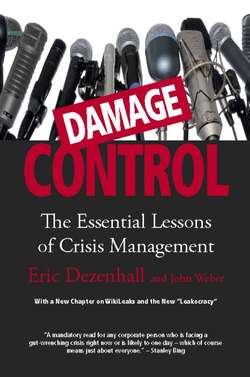Читать книгу Damage Control (Revised & Updated) - Eric Dezenhall - Страница 13
На сайте Литреса книга снята с продажи.
CRISIS MYTHOLOGY
ОглавлениеThe Tylenol affair ushered in a new wrinkle in crisis management: Proselytizing how well the company has handled the crisis itself. In a quasicomical twist, PR consultants with peripheral (if any) attachment to the case began sharing “their” insights in business forums, repeating the central myth of the “instant” recall. J&J’s brilliant crisis management became unchallenged dogma.
Touting one’s legitimate success is no sin, and, in fact, is a valuable service when public welfare is concerned, but not everybody bought the spin on the spin. Perhaps the most prominent skeptic was Jack O’Dwyer, whose newsletter has been chronicling the public relations industry for nearly forty years. Despite repeated assertions in business school textbooks and PR seminars that J&J “instantly” recalled Tylenol capsules, it actually took eight days “after the first deaths were announced and after another Tylenol poisoning was discovered in California,” O’Dwyer wrote in his January 2000 newsletter.
In reality, it was retailers like CVS and Walgreen’s that ceased stocking Tylenol capsules one day after the first death was reported on September 30, 1982. J&J’s recall was announced on October 7, a time gap which, in the current age of 24-hour news coverage, would have been disastrous.
According to O’Dwyer, when questioned about the possible presence of cyanide in its facilities, J&J initially denied there was any stored in its manufacturing system. A day later, the company did admit that cyanide was stored in one facility for testing purposes. During the course of the investigation, this cyanide was ruled out as a possible source for internal contamination.
